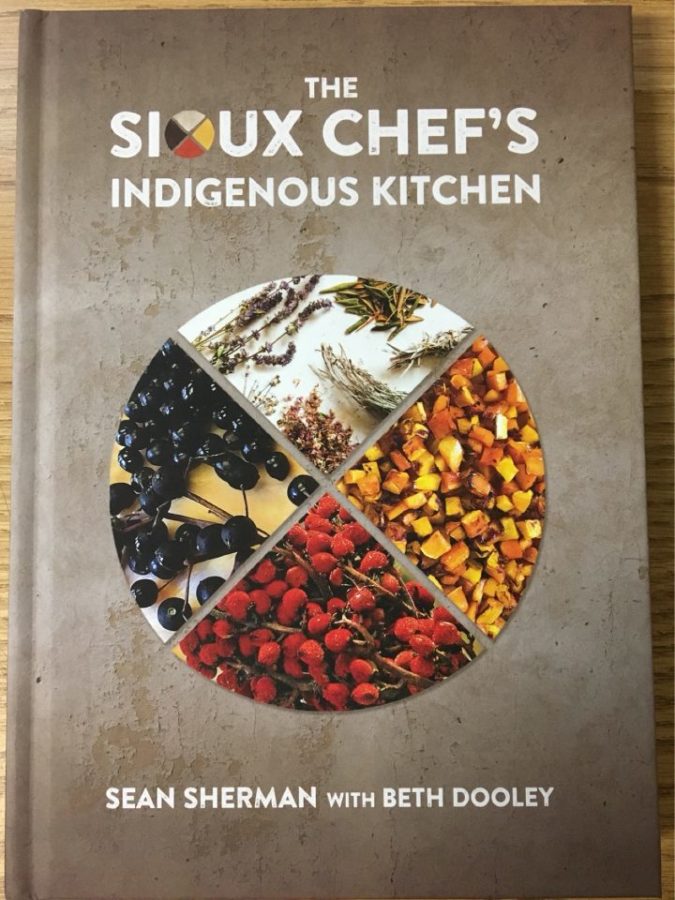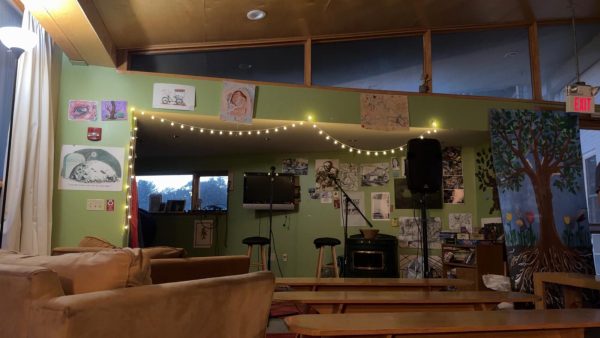Sioux Chef GATHERs with Students
Sioux Chef Sean Sherman strives to celebrate the backbone of America, the indigenous culture, through food.
“You don’t have to be of indigenous descent to appreciate the plants and areas of which all these [ingredients] are from…it’s just going to benefit everybody to know about the culture that has affected America for hundreds of years,” said Sherman.
On Saturday, Nov. 4, 2017, with the help of student farmers, Sherman treated dinner guests at GATHER, a Clarke Forum and Dickinson Farm sponsored dinner to familiarize attendees with sustainable and indigenous foods, with both a delicious four-course menu and insight into the evolution of North American indigenous foods.
Growing up on the Pine Ridge reservation of South Dakota, Sherman observed that many of the traditional foods that had historically been grown and eaten there were no longer available because of how the American reservation system functioned. Later in life, as a chef, Sherman recognized the culture missing and decided to devote all of his time and energy into learning as much about it as he could.
He created recipes using wild foods, Native American agriculture and indigenous cooking techniques, exploring the region of cuisines in North America. He also believed that spreading knowledge and understanding of native plants and animals would encourage people to get to know their environment better and impact how people think about nature.
Sherman commented, “Our kids can name more Kardashians than they can trees. That’s some poor education right there. We have to think about things like that as we move forward… it’s a matter of getting a handle of our own food systems, no matter where we are.”
The dinner showcased indigenous ingredients within North America, creating meals of pre-colonial food that showed how indigenous cultures were eating before they were influenced by other cultures.
Dinner began with wild turkey and blackberry pemmican with wild rice flatbread and micro-amaranth. The flatbreads were made with hand-harvested wild rice from Minnesota, and the turkey was mixed with fresh berries and seasoned with pure maple sugar. It was a very healthy meal, without any dairy, processed sugar, wheat, pork or chicken, as none of these options were available in North America before colonization.
When asked about the meal, Nicole Erin, a nutrition therapist, realized that there was so much more that she could be doing in order to learn more about the local environment and what is available in her area. “I’m constantly telling people to eat locally, eat whole food, so [this dinner is] right up my alley… it was just further education and, also, motivation and drive to keep doing what I do.”
The second course featured nixtmalized flint corn with smoked trout in crab-apple broth and dried apple corn shoots.
The main course served pine-braised venison with caramelized tulips, hazelnuts and dandelion greens in elderberry broth. Sherman continued to emphasize how healthy the dishes were by pointing out that only one cup of oil was used to make enough of the main dish for 80 people.
Dinner concluded with dessert: a sun seed tart made with acorn flour, roasted winter squash, maple syrup and berries, decorated with flower blossoms.
Along with the beautifully simple presentation, every course had plenty of plant diversification, using both wild and agricultural plants, was full of healthy proteins and had very simple ingredients. Dinner guests called the meals “extremely unique” and “very healthy… it’s like something people have forgotten, but now it needs to be preserved.”
Sherman’s current projects include the recent release of his new book, The Sioux Chef’s Indigenous Kitchen, which introduces many recipes using only indigenous ingredients and some of his philosophy, as well as work through the new non-profit organization North American Traditional Indigenous Food Systems (NATIFS). His goal is to help develop urban indigenous food hubs in large cities, where there would be a restaurant with a training education center called the Indigenous Food Lab, and then satellite across the travel areas in order to impact those communities with healthy food access, skills, and education. Sherman hopes to eventually create an indigenous food network and food businesses all across the nation.





